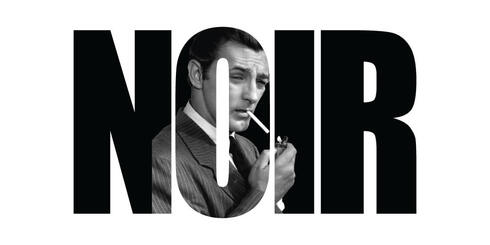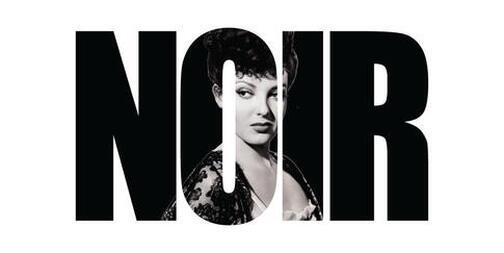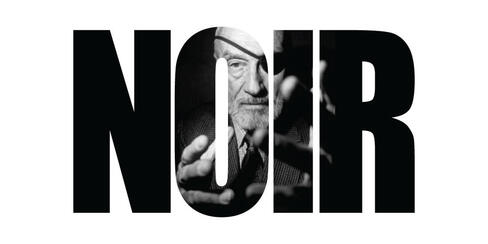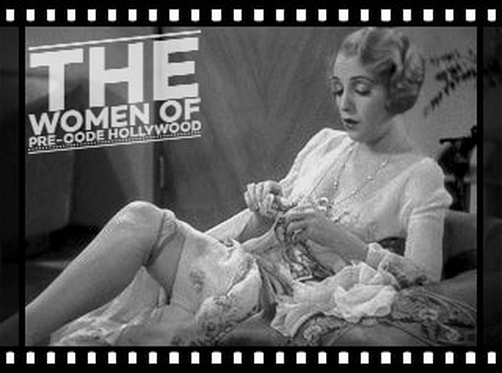ORSON WELLES
AND FILM NOIR
Orson Welles had a significant impact on the development and evolution of film noir, a genre characterized by its dark and cynical themes, shadowy visual style, and morally ambiguous characters. Welles' groundbreaking film "Citizen Kane" (1941) is often considered a precursor to film noir and had a profound influence on the genre.
"Citizen Kane" introduced several key elements that became defining characteristics of film noir. Welles' innovative use of deep focus cinematography, chiaroscuro lighting, and low-angle shots created a visual style that emphasized the dark and mysterious aspects of the narrative. The film's nonlinear narrative structure, with its multiple perspectives and flashback sequences, also became a staple of film noir storytelling.
Welles' next film, "The Magnificent Ambersons" (1942), further contributed to the development of film noir aesthetics. Although the studio heavily edited and reworked the film without Welles' approval, it retained his signature visual style and showcased his ability to create atmospheric and moody scenes.
In addition to his directorial contributions, Welles' acting roles in film noir also left a lasting impact. His portrayal of Harry Lime in Carol Reed's "The Third Man" (1949) is often cited as one of the greatest performances in film noir history. The character of Harry Lime, a morally ambiguous and manipulative figure, exemplified the complex and flawed antiheroes that became synonymous with the genre.
Furthermore, Welles' later film "Touch of Evil" (1958) is considered a quintessential film noir. As both director and actor, Welles crafted a gritty and suspenseful tale of corruption and moral decay. The film's visually striking compositions, use of shadows, and its exploration of morally compromised characters solidified Welles' reputation as a master of film noir aesthetics.
Welles' influence on film noir extended beyond his own work. His innovative techniques and narrative structures inspired subsequent filmmakers to experiment with similar styles. Directors such as Robert Altman, Roman Polanski, and Martin Scorsese have acknowledged Welles' impact on their own films, particularly in terms of visual storytelling and the exploration of complex and morally conflicted characters.
In summary, Orson Welles' contributions to film noir cannot be overstated. Through his groundbreaking techniques, visual style, and complex characters, he played a crucial role in shaping the genre and establishing its enduring appeal. His films continue to be studied and revered as essential works in the film noir canon.
"Citizen Kane" introduced several key elements that became defining characteristics of film noir. Welles' innovative use of deep focus cinematography, chiaroscuro lighting, and low-angle shots created a visual style that emphasized the dark and mysterious aspects of the narrative. The film's nonlinear narrative structure, with its multiple perspectives and flashback sequences, also became a staple of film noir storytelling.
Welles' next film, "The Magnificent Ambersons" (1942), further contributed to the development of film noir aesthetics. Although the studio heavily edited and reworked the film without Welles' approval, it retained his signature visual style and showcased his ability to create atmospheric and moody scenes.
In addition to his directorial contributions, Welles' acting roles in film noir also left a lasting impact. His portrayal of Harry Lime in Carol Reed's "The Third Man" (1949) is often cited as one of the greatest performances in film noir history. The character of Harry Lime, a morally ambiguous and manipulative figure, exemplified the complex and flawed antiheroes that became synonymous with the genre.
Furthermore, Welles' later film "Touch of Evil" (1958) is considered a quintessential film noir. As both director and actor, Welles crafted a gritty and suspenseful tale of corruption and moral decay. The film's visually striking compositions, use of shadows, and its exploration of morally compromised characters solidified Welles' reputation as a master of film noir aesthetics.
Welles' influence on film noir extended beyond his own work. His innovative techniques and narrative structures inspired subsequent filmmakers to experiment with similar styles. Directors such as Robert Altman, Roman Polanski, and Martin Scorsese have acknowledged Welles' impact on their own films, particularly in terms of visual storytelling and the exploration of complex and morally conflicted characters.
In summary, Orson Welles' contributions to film noir cannot be overstated. Through his groundbreaking techniques, visual style, and complex characters, he played a crucial role in shaping the genre and establishing its enduring appeal. His films continue to be studied and revered as essential works in the film noir canon.
VIDEO TRIBUTE
Orson Welles
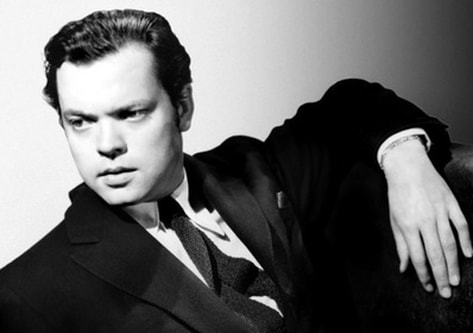
Orson Welles was an American actor, director, writer, and producer who is considered one of the most influential figures in the history of cinema. He was born on May 6, 1915, in Kenosha, Wisconsin, and died on October 10, 1985, in Los Angeles, California.
Welles began his career in theater during the 1930s, gaining recognition for his innovative productions. In 1938, at the age of 23, he gained widespread fame for his radio adaptation of H.G. Wells' novel "The War of the Worlds," which caused panic among listeners who believed the broadcast was an actual news report.
Welles made his directorial debut in 1941 with "Citizen Kane," a film that is widely regarded as one of the greatest movies ever made. It tells the story of a newspaper magnate inspired by real-life figures such as William Randolph Hearst. Welles co-wrote, directed, and starred in the film, which earned him an Academy Award nomination for Best Actor and a nomination for Best Original Screenplay.
Despite the critical success of "Citizen Kane," Welles faced numerous challenges throughout his career. He often struggled with studio interference and limited budgets, which impacted the distribution and reception of his subsequent films. Some of his other notable works include "The Magnificent Ambersons" (1942), "Touch of Evil" (1958), and "Chimes at Midnight" (1965).
Welles was known for his distinctive filmmaking style, characterized by deep focus cinematography, innovative use of lighting, and unconventional narrative structures. He often portrayed complex and morally ambiguous characters, challenging traditional storytelling conventions.
In addition to his film career, Welles also had a successful career in theater and performed in numerous stage productions. He co-founded the Mercury Theatre, which produced acclaimed adaptations of Shakespearean plays such as "Macbeth" and "Julius Caesar." Welles continued to work in both film and theater throughout his life, although he faced financial difficulties and struggled to secure funding for his projects.
Orson Welles' contributions to cinema and his innovative approach to storytelling have had a lasting impact on filmmakers and artists. His work continues to be studied and celebrated for its technical achievements and artistic vision. Despite the challenges he faced, Welles left behind a significant body of work that cemented his status as a legendary figure in the history of cinema.
Welles began his career in theater during the 1930s, gaining recognition for his innovative productions. In 1938, at the age of 23, he gained widespread fame for his radio adaptation of H.G. Wells' novel "The War of the Worlds," which caused panic among listeners who believed the broadcast was an actual news report.
Welles made his directorial debut in 1941 with "Citizen Kane," a film that is widely regarded as one of the greatest movies ever made. It tells the story of a newspaper magnate inspired by real-life figures such as William Randolph Hearst. Welles co-wrote, directed, and starred in the film, which earned him an Academy Award nomination for Best Actor and a nomination for Best Original Screenplay.
Despite the critical success of "Citizen Kane," Welles faced numerous challenges throughout his career. He often struggled with studio interference and limited budgets, which impacted the distribution and reception of his subsequent films. Some of his other notable works include "The Magnificent Ambersons" (1942), "Touch of Evil" (1958), and "Chimes at Midnight" (1965).
Welles was known for his distinctive filmmaking style, characterized by deep focus cinematography, innovative use of lighting, and unconventional narrative structures. He often portrayed complex and morally ambiguous characters, challenging traditional storytelling conventions.
In addition to his film career, Welles also had a successful career in theater and performed in numerous stage productions. He co-founded the Mercury Theatre, which produced acclaimed adaptations of Shakespearean plays such as "Macbeth" and "Julius Caesar." Welles continued to work in both film and theater throughout his life, although he faced financial difficulties and struggled to secure funding for his projects.
Orson Welles' contributions to cinema and his innovative approach to storytelling have had a lasting impact on filmmakers and artists. His work continues to be studied and celebrated for its technical achievements and artistic vision. Despite the challenges he faced, Welles left behind a significant body of work that cemented his status as a legendary figure in the history of cinema.
Quotes:
"I started at the top and worked down."
"I'm not bitter about Hollywood's treatment of me, but over its treatment of D.W. Griffith, Josef von Sternberg, Erich von Stroheim, Buster Keaton and a hundred others."
"I hate television. I hate it as much as peanuts. But I can't stop eating peanuts."
"If there hadn't been women we'd still be squatting in a cave eating raw meat, because we made civilization in order to impress our girlfriends. And they tolerated it and let us go ahead and play with our toys."
[on Citizen Kane (1941) being colorized] "Keep Ted Turner and his goddamned Crayolas away from my movie."
"For thirty years, people have been asking me how I reconcile X with Y! The truthful answer is that I don't. Everything about me is a contradiction and so is everything about everybody else. We are made out of oppositions; we live between two poles. There is a philistine and an aesthete in all of us, and a murderer and a saint. You don't reconcile the poles. You just recognize them."
"My doctor told me to stop having intimate dinners for four. Unless there are three other people."
"I do not suppose I shall be remembered for anything. But I don't think about my work in those terms. It is just as vulgar to work for the sake of posterity as to work for the sake of money."
"Race hate isn't human nature; race hate is the abandonment of human nature."
"Living in the lap of luxury isn't bad, except you never know when luxury is going to stand up."
- Orson Welles
Trivia:
H.G. Wells was driving through San Antonio, Texas, and stopped to ask the way. The person he happened to ask was none other than Orson Welles, who had recently broadcast "The War of the Worlds" on the radio. They got on well and spent the day together.
He and John Huston were good friends from the 1940s to Welles' death in 1985. Both men coincidentally made their spectacular debut as directors in 1941 (Welles with Citizen Kane (1941) and Huston with The Maltese Falcon (1941)). Both would eventually be directed by the other: Welles' had a cameo in Huston's adaptation of Moby Dick (1956) and Huston played the lead in Welles' unfinished The Other Side of the Wind (2018).
Frank Sinatra was the godfather of his and Rita Hayworth's daughter, Rebecca Welles.
His performance as Charles Foster Kane in Citizen Kane (1941) is ranked #12 on Premiere magazine's 100 Greatest Movie Characters of All Time.
John Ford, whom Welles admired as the greatest American director and who, in turn, admired Welles as a director and actor, wanted to cast him as Mayor Frank Skeffington in his movie adaption of Edwin O'Connor's novel The Last Hurrah (1958). Welles was unable to accept the role due to scheduling conflicts, and Spencer Tracy was cast instead.
He remained good friends with Joseph Cotten until the end of his life, despite a working relationship that was often considered demanding of the older Cotten.
He and John Huston were good friends from the 1940s to Welles' death in 1985. Both men coincidentally made their spectacular debut as directors in 1941 (Welles with Citizen Kane (1941) and Huston with The Maltese Falcon (1941)). Both would eventually be directed by the other: Welles' had a cameo in Huston's adaptation of Moby Dick (1956) and Huston played the lead in Welles' unfinished The Other Side of the Wind (2018).
Frank Sinatra was the godfather of his and Rita Hayworth's daughter, Rebecca Welles.
His performance as Charles Foster Kane in Citizen Kane (1941) is ranked #12 on Premiere magazine's 100 Greatest Movie Characters of All Time.
John Ford, whom Welles admired as the greatest American director and who, in turn, admired Welles as a director and actor, wanted to cast him as Mayor Frank Skeffington in his movie adaption of Edwin O'Connor's novel The Last Hurrah (1958). Welles was unable to accept the role due to scheduling conflicts, and Spencer Tracy was cast instead.
He remained good friends with Joseph Cotten until the end of his life, despite a working relationship that was often considered demanding of the older Cotten.

